Photographs: Reuters
India's banking system is stable and can withstand global shocks, but there are weak spots like decelerating growth and rising fiscal deficit which need to be addressed, said a Reserve Bank report.
"The domestic financial system remains stable in the face of an adverse international backdrop ... soft spots (are needed) to be addressed going forward," said the RBI's Financial Stability Report (FSR) released on Thursday.
The FSR holistically assesses soft spots in India's financial sector from a systemic perspective. It outlines the key risks arising from macroeconomic environment, financial markets and institutions and regulatory and other infrastructure. It also seeks to assess the position in respect of continuing vulnerabilities even as new ones are emerging.
Referring to the weak spots, the report said, "Poorer global growth prospects and sovereign debt crisis in Europe has heightened external sector vulnerability. At the same time the domestic growth has weakened while inflation has remained high".
. . .
Banking system stable but weak spots in economy: RBI
Photographs: Reuters
As regards weakening rupee, the report said, "Exchange rate depreciation has inflationary implications through the increase in the cost of oil and other imported goods which are inputs in overall production."
Moreover, it said the increase in petrol and diesel prices and minimum support prices have a cascading effect on the entire economy. It is also moderating impact of the monetary policy measures taken by the RBI earlier.
Rupee has weakened nearly 18 per cent since January and is currently trading at Rs 52.65 against dollar.
The other major challenge before the government would be to contain fiscal deficit during 2011-12. "The fiscal situation remains challenging as the revenue collection was lower than expected in the first half of the current year," it said.
. . .
Banking system stable but weak spots in economy: RBI
Photographs: Reuters
The government proposes to bring down the fiscal deficit to 4.6 per cent in the current fiscal, from 4.7 per cent in 2010-11. However, poor disinvestment and tardy revenue collection is putting pressure on fiscal deficit.
As far as growth is concerned, it is likely to moderate to 7.5 per cent in 2011-12 from 8.5 per cent a year ago.
The report, further, said that the global risks to the stability of the domestic financial system have intensified over the past 6 months.
"Emerging developments in the macro economy and in the financial soundness indicators of the banking system pose some concerns as do the sharp corrections accompanied by high volatility in financial markets," RBI said.
. . .
Banking system stable but weak spots in economy: RBI
Photographs: Reuters
Highlights:
- FSR for December 2011 shows that the domestic financial system remains robust.
- This was attested by the confidence reposed by the respondents of the Systemic Risk Survey in the financial system
- Over half the respondents were 'confident' or 'very confident' about the stability of the Indian financial system.
- Respondents identified risks arising from asset quality as the biggest concern, followed by market volatility and global risks.
- A series of macrofinancial stress tests, which assess the resilience of the banking system to adverse macroeconomic developments found that banks' capital adequacy remains above regulatory requirements even under severe stress scenarios.
- The Financial Stability Map and Indicator – quantitative tools designed to measure movements in risk dimensions affecting the entire financial system - however, point to some heightening of risks.
. . .
Banking system stable but weak spots in economy: RBI
Photographs: Reuters
Macroeconomic environment
- All components of domestic demand (private and government, consumption and investment) have decelerated.
- Inflationary pressures remain elevated, driven by a host of factors. Exchange rate depreciation has inflationary implications. The increase in petrol and diesel prices and minimum support prices appears to be neutralising the demand moderating impact of monetary policy measures.
- Risks to the external sector have risen as imports remain high while there is some slowdown in exports.
- The fiscal position remains challenging. The additional demand for supplementary grants points to the risk of slippages.
. . .
Banking system stable but weak spots in economy: RBI
Photographs: Reuters
Financial markets
Indian markets, particularly, equity and currency markets, remained volatile during the period under review affected by adverse developments abroad.
Currency depreciation has been the sharpest in those countries among emerging markets which have external deficit, including India, compared to those countries which have surpluses. This would impact the Indian economy through various channels:
a. Translation losses on the large and rising gross external liabilities and transaction losses on trade exposures.
b. Repayment/ redemption of ECB and FCCB would become costlier and refinancing at higher domestic rates might become necessary.
c. FIIs might stay away further affecting sentiment in equity market.
Some issues in the equity market microstructure, particularly in the derivatives segment warrant monitoring.
. . .
Banking system stable but weak spots in economy: RBI
Photographs: Reuters
Financial institutions: soundness and resilience
There has been some deterioration in financial soundness indicators (viz., capital adequacy and asset quality) but capital adequacy remains well above regulatory requirements and asset quality indicators continue to compare favourably with ratios in peer countries.
Going forward, if GDP growth slows down, there could be some downstream impact on asset quality. At the same time, additional capital will need to be raised due to the compulsions of implementation of Basel III, a growing (albeit at a potentially decelerated rate) economy and financial inclusion.
Higher provisioning requirements (due to higher slippages) and increased interest expenses has weighed on the profitability of the banking sector.
Urban banks and NBFCs also exhibited resilience to credit risk shocks.
The insurance and pension sectors – given their 'long only' and long term investment styles typically add to the stability of financial markets.
. . .
Banking system stable but weak spots in economy: RBI
Photographs: Reuters
Payment and settlement systems
The RTGS system, which creates incentives for market participants to postpone payments to the latter half of the day, can increase the liquidity risk in the system and can also magnify the impact of an operational event.
Cross-sectional exposures
The banking system as also the financial sector is distinctly tiered. This means that some banks and institutions are much more connected than others and could have a larger source of contagion impact that in a less tiered network. Insurance companies and asset management companies as lenders would be affected by any disturbances in the banking system (which is the major borrowing segment).
. . .
Banking system stable but weak spots in economy: RBI
Photographs: Reuters
Distress dependencies between banks
The assessment of distress dependencies based on various indicators shows that the joint probability of distress is low at present though there is a marginal uptrend in the recent past.
New tools for risk assessment
Recognising the critical importance of supplementing the assessment of systemic risks through a wider consultation, the FSR has introduced some new tools for risk assessment.
These are Systemic Risk Survey and Systemic Liquidity Indicator in addition to network model introduced in last FSR.
Stability measures too have been enhanced to model the distress dependencies in the banking sector, among specific groups of banks and that associated with an individual bank.
The next FSR is scheduled to be published in June 2012.

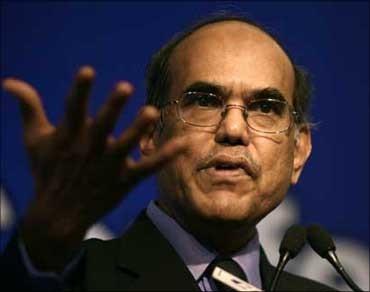
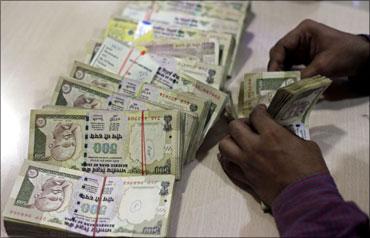
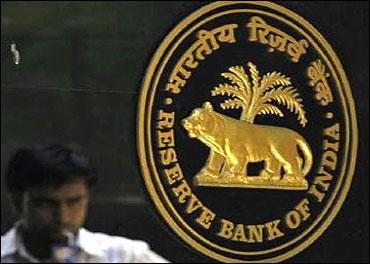
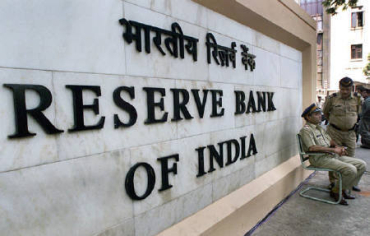


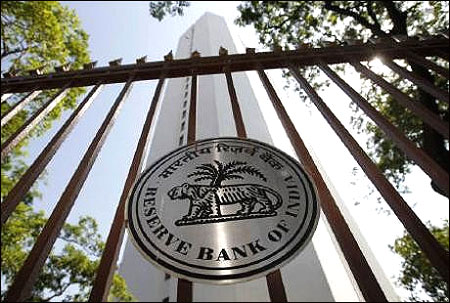
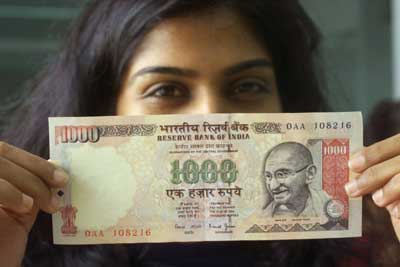
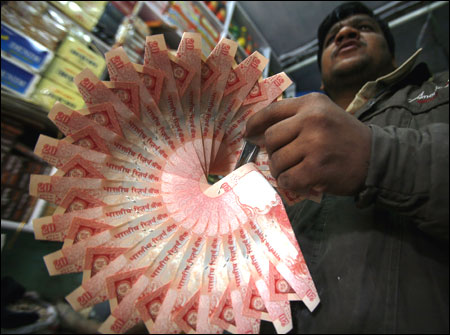
article